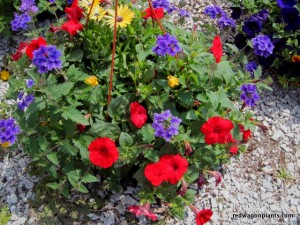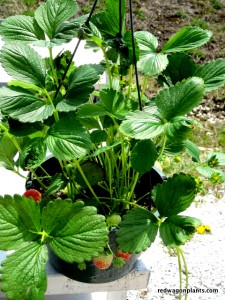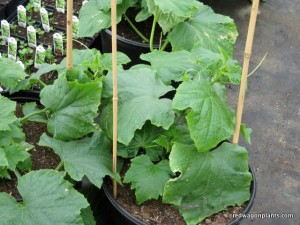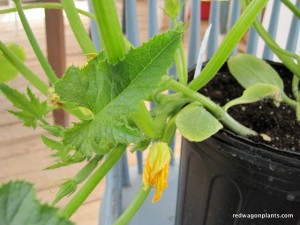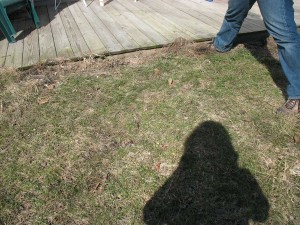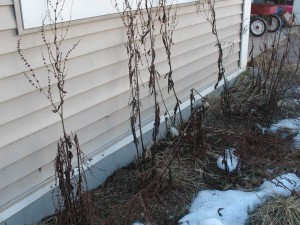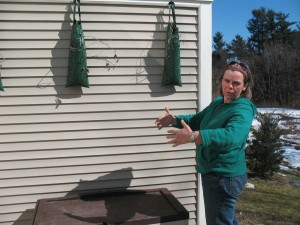To celebrate this joint effort, we are holding a fun and friendly contest. Everyone is invited to submit a recipe that uses both sweet potatoes and milk by 5:00 on Friday 6/4 - online via email at julie(AT)redwagonplants(DOT)com or on Facebook. We will post all of the recipes on our website, and on Saturday morning we will announce the winner of the contest. The winner will receive a $25 gift certificate to Red Wagon Plants and a free gallon of milk from Family Cow Farmstand.
Here is the first recipe we have received so far.
Creamy Sweet Potato Soup Recipe
from Carin Laughlin Hoffman (5/31/10)
INGREDIENTS
2 Tbsp (1/4 stick) butter
1 cup chopped onion
2 small celery stalks, chopped, greens reserved
1 medium leek, sliced (white and pale green parts only)
1 large garlic clove, chopped
1 1/2 pounds red-skinned sweet potatoes (yams), peeled, cut into 1-inch pieces (about 5 cups)
4 cups chicken stock or canned low-salt chicken broth (use vegetable broth for vegetarian option)
1 cinnamon stick
1/4 teaspoon ground nutmeg
1 1/2 cups half and half
2 Tbsp maple syrup
The leafy tops of the celery stalks, chopped
METHOD
1 Melt the butter in a large, heavy-bottomed pot over medium-high heat. Add the chopped onion and sauté for about 5 minutes. Add chopped celery stalks and leek, sauté about 5 minutes. Add garlic and sauté 2 minutes.
2 Add sweet potatoes, chicken stock, cinnamon stick, and nutmeg; bring to boil. Reduce heat and simmer uncovered until potatoes are tender, about 20 minutes.
3 Remove cinnamon stick and discard. Working in batches, puree soup in blender until smooth. Return to pot.
4 Add half and half and maple syrup and stir over medium-low heat to heat through. Season soup to taste with salt and pepper. (Can be prepared 1 day ahead. Cool soup slightly. Cover and refrigerate soup and celery leaves separately. Bring soup to simmer before continuing.) Ladle into bowls. Sprinkle with celery leaves.
Serves 6 to 8.
Here is an another recipe from Melissa Meese (6/1/10)
Sweet Potato Buttermilk Biscuits
1 C. of mashed sweet potatoes
1 Tbs. baking powder... See More
2 Tbs. packed brown sugar
1 tsp. of salt
1/2 C. butter, room temp
1/2 tsp. baking soda
2 cups all-purpose flour
3/4 C. buttermilk
Heat oven to 425 degrees F. Combine flour, baking powder & salt in a large bowl. In a mixing bowl, combine sweet potato, brown sugar and butter. Beat at low-med. speed until fluffy. Dissolve baking soda in buttermilk. Stir buttermilk & sweet potato mixture alternately into dry ingredients. Roll dough 1" thick. Cut with floured 2" round cutter.
Place on ungreased baking sheet. Bake at 425 degrees for 15-20 minutes.
Sweet Potato and Corn Chowder
From Nora Doyle-Burr (of Last Resort Farm - a great farm stand and pick-your own berry farm)
(serves 6-8)
8 ears corn, husked and silked
6 cups vegetable or chicken broth
2 tablespoons butter
1 leek, white and tender green parts, thinly sliced
1 garlic clove, minced
1 large sweet potato, peeled and diced
Salt
1 1/2 cups milk
1 tablespoon sugar, or to taste
Freshly ground black pepper
1) Strip the kernels from the corn and set aside. Combine the broth and corncobs in a large pot and bring to a boil. Reduce the heat and simmer for 30 minutes. Strain, discarding the cobs and reserving the broth. It should now be infused with corn flavor.
2) Melt the butter over medium heat in a large saucepan. Add the leek and saute until softened, about 3 minutes. Add the garlic and saute for another 2 minutes. Add the stock, corn kernels, sweet potatoes, and salt to taste. Bring to a boil, lower the heat, and simmer for 25 to 30 minutes, until the potatoes are tender.
3) Add the milk and sugar. Season with the pepper. Taste and season with more salt, sugar, and pepper, if desired. Simmer for 5 minutes. Serve hot.
Adapted from "Serving Up the Harvest: Celebrating the Goodness of Fresh Vegetables" by Andrea Chesman
From Clare Joy of Shelburne, VT
Sweet Potato Bake
Ingredients:
3 sweet potatoes, sliced thinly
1 lb Emmentaler (Swiss) Cheese, grated
1 pint cream
Some herbs of your choice, optional (I like a little lemon thyme)
Salt & pepper
Directions:
Layer the sweet potatoes sprinkling over the cheese and seasonings as you go. Top with a layer of cheese. Pour the cream slowly in one corner so it spreads across the bottom of the dish but not over the top of the other ingredients.
Bake covered for 1 hour at 350 degrees then remove the cover and bake a further 15-30 mins. until all the liquid is absorbed.
Enjoy!
from Carolyn Siccama
Velvety Squash (and Sweet Potato) Soup
1 (3 pound) butternut squash (*I have used many different types of squash in this recipe, Delacata is particularly good)
1 (2 pound) acorn squash*
1 sweet potato
2 cups chopped onion
2 tsp canola oil
5 cups veggie broth
2/3 cup apple cider (when I don't have cider I use applesauce and it works just as well)
2 tablespoons molasses
1 tsp curry powder
3/4 tsp salt
1/8 tsp ground red pepper
2/3 cup milk
Peel and cut squash and sweet potato into small cubes and cook in boiling water until soft.
In another pan, saute onion until soft. Add cooked squash & sweet potato. Stir in broth and next 5 ingredients (through pepper). Reduce heat. simmer 5 minutes.
Place half of squash mixture into a blender and blend until smooth. Repeat until all soup is blended (I do like to leave a few chunks of squash and potato un-blended). Return everything to the pan.
Stir in milk. Cook over medium heat until thoroughly heated. Enjoy!
Vermont Sweet Potato Milkshakes & Creamsicles
From Deirdre Holmes
1 sweet potato (med-sized)
2 cups milk
1 tablespoon maple syrup (or maple liqueur)
3-4 ice cubes
crystalized ginger (optional)
lime or lemon juice (optional)
1. Bake washed whole sweet potato in a 400º oven for approximately 45 minutes or until soft.
2. Remove peel and put insides into blender or food processor.
3. Add Lindsay's finest whole milk including cream layer, maple syrup and ice cubes, and pulse until smooth. You can adjust the consistency by adding more milk or ice cubes.
4. If you're agreeable to adding a few non-local ingredients, several pieces of crystalized ginger, juice of 1/4 of a lime or lemon, and/or your favorite pumpkin pie spices make delicious additions.
5. For Creamsicles, pour this mixture into a popsicle mold and freeze.

 We're so excited for this weekend's sale of sweet potato plants, and want to make sure everyone has what they need to enjoy these wonderful plants.
We're so excited for this weekend's sale of sweet potato plants, and want to make sure everyone has what they need to enjoy these wonderful plants.





